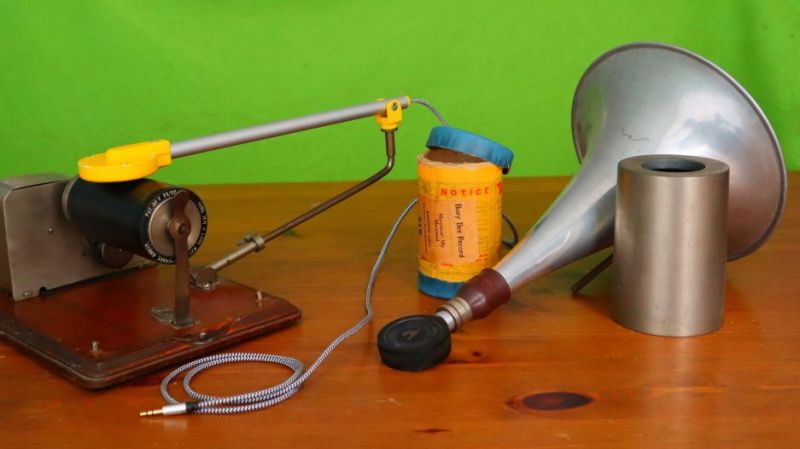
Sound recording and playback have come a long way in the last century or so, but it’s fair to say there’s still a lot of interesting stuff locked away on old recordings. Not having a way to play it back is partly to blame; finding an antique phonograph that plays old-timey cylinder recordings is pretty hard. But even then, how do you digitize the output of these fragile, scratchy old recordings?
As it happens, [Jan Derogee] is in a position to answer these questions, with an antique phonograph and a bunch of Edison-style wax cylinders with voices and music from a bygone era locked away on them. It would be easy enough to just use the “reproducer” he previously built and set up a microphone to record the sound directly from the phonograph’s trumpet, but [Jan] decided to engineer a better solution. By adding the piezo element from an electronic greeting card to his reproducer, potted with liberal quantities of epoxy and padded with cotton, the piezo pickup was attached to the phonograph arm in place of the original stylus and trumpet. The signal from the piezo element was strong enough to require a shunt resistor, allowing it to be plugged directly into the audio input jack on a computer. From there it’s just an Audacity exercise, plus dealing with the occasional skipped groove.
We appreciate [Jan]’s effort to preserve these recordings, as well as the chance to hear some voices from the past. We’re actually surprised the recording sound as good as they do after all this time — they must have been well cared for.
0 Commentaires